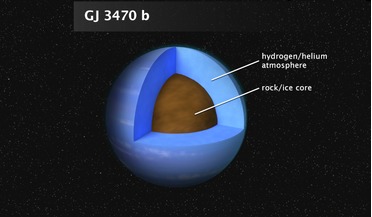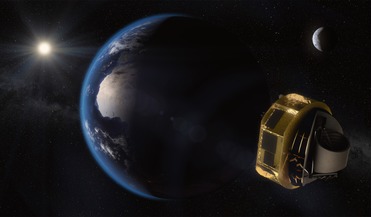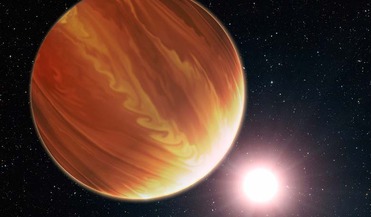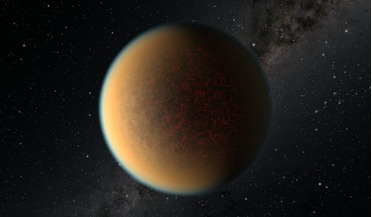 03 July 2019
New study reveals detailed exoplanet atmosphere
03 July 2019
New study reveals detailed exoplanet atmosphere
...known as GJ 3470 b), is a sub-Neptune/Super-Earth hybrid exoplanet weighing in at 12.6 Earth masses. It is more massive than ...—but has managed to accrete the primordial hydrogen/helium atmosphere that is largely "unpolluted" by heavier elements," said...
 23 March 2018
ESA selects ARIEL to look closely at exoplanets
23 March 2018
ESA selects ARIEL to look closely at exoplanets
... scan the skies during its 4-year mission to observe 1000 exoplanets orbiting distant stars, to make the first large-scale survey of the chemistry of exoplanet atmospheres. Data collected from the mission should help enable scientists answer...
 11 December 2019
Water abundance lower than expected on exoplanets
11 December 2019
Water abundance lower than expected on exoplanets
... computational models and statistical methods, the team were able to obtain estimates of the chemical abundances in the exoplanet atmospheres across the sample. Their results showed that six planets had an abundance of sodium (Na) and another six...
 26 April 2016
Sulphur chemistry could be the key to clouds on many exoplanets
26 April 2016
Sulphur chemistry could be the key to clouds on many exoplanets
... with air pollution from vehicular emission (think Los Angeles, Dehli and Beijing). Past studies of exoplanet atmosphere’s have concentrated on hydrocarbons and nitriles as the main compound in photochemical hazes, especially on warm sub-Neptune...
 12 March 2021
Scientists find a rocky exoplanet rebuilding its atmosphere
12 March 2021
Scientists find a rocky exoplanet rebuilding its atmosphere
... permanently facing Earth. Although the case for GJ 1132 b might seem cut and dry, interest in the exoplanets atmosphere was revived when a different team of researchers using ground-based instruments suggested that GJ 1132 b might actually...
 06 April 2020
Planets can form second atmospheres rich in CO, new study shows
06 April 2020
Planets can form second atmospheres rich in CO, new study shows
... disk. In disks that were slightly more massive, enough carbon dioxide (CO) could be accreted to give an exoplanet sub-Neptune-like atmospheric pressures. “We show the effect of gas accretion on a planet’s pressure and bulk density over time and...